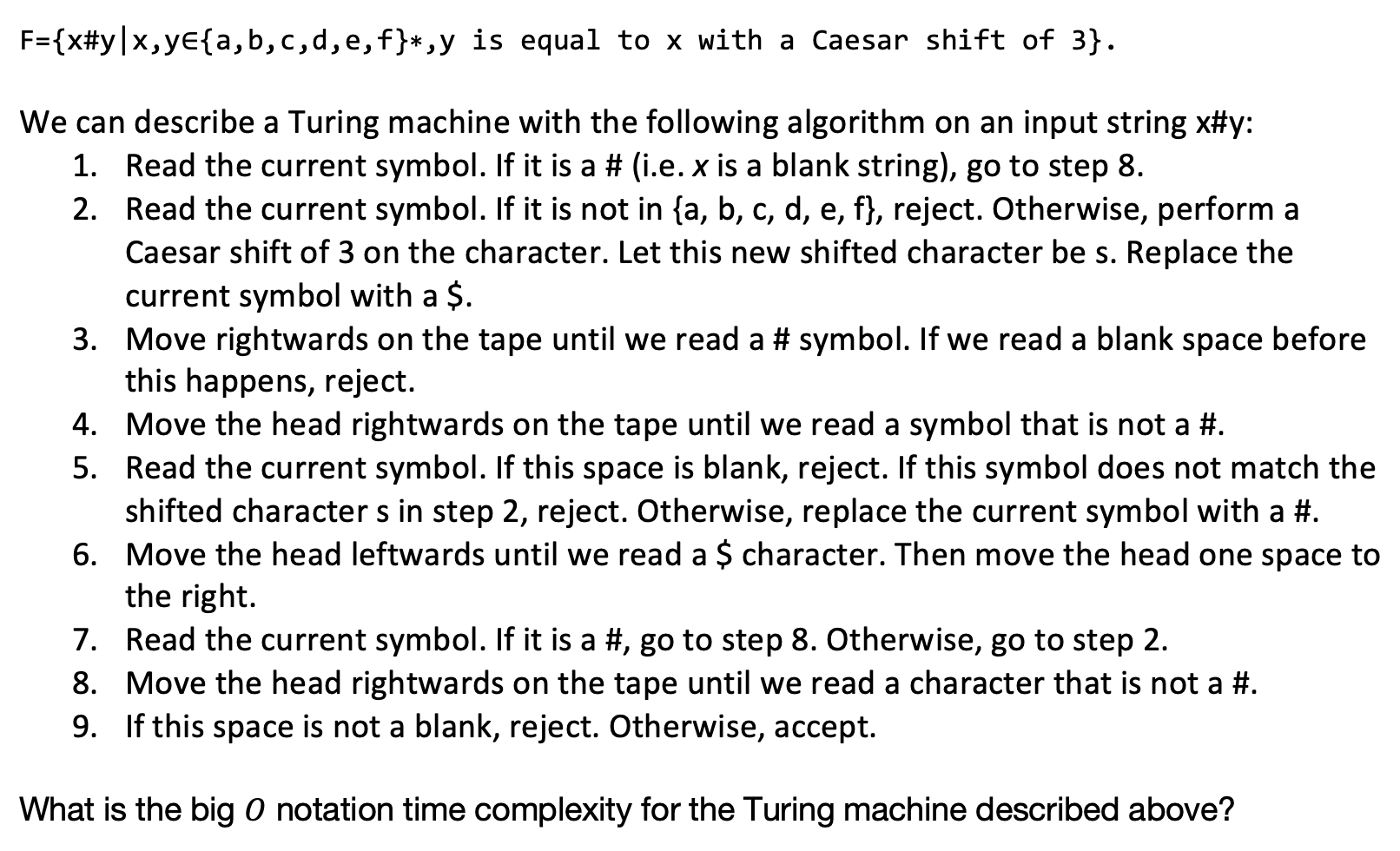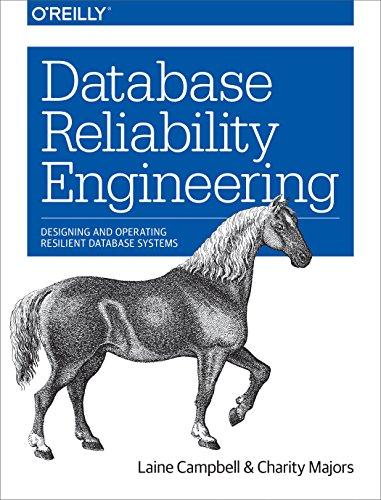
F={x#y|x,ye{a,b,c,d,e,f}*,y is equal to x with a Caesar shift of 3}. We can describe a Turing machine with the following algorithm on an input string x#y: 1. Read the current symbol. If it is a # (i.e. x is a blank string), go to step 8. 2. Read the current symbol. If it is not in {a, b, c, d, e, f}, reject. Otherwise, perform a Caesar shift of 3 on the character. Let this new shifted character be s. Replace the current symbol with a $. 3. Move rightwards on the tape until we read a # symbol. If we read a blank space before this happens, reject. 4. Move the head rightwards on the tape until we read a symbol that is not a #. 5. Read the current symbol. If this space is blank, reject. If this symbol does not match the shifted characters in step 2, reject. Otherwise, replace the current symbol with a #. 6. Move the head leftwards until we read a $ character. Then move the head one space to the right. 7. Read the current symbol. If it is a #, go to step 8. Otherwise, go to step 2. 8. Move the head rightwards on the tape until we read a character that is not a #. 9. If this space is not a blank, reject. Otherwise, accept. What is the big o notation time complexity for the Turing machine described above? F={x#y|x,ye{a,b,c,d,e,f}*,y is equal to x with a Caesar shift of 3}. We can describe a Turing machine with the following algorithm on an input string x#y: 1. Read the current symbol. If it is a # (i.e. x is a blank string), go to step 8. 2. Read the current symbol. If it is not in {a, b, c, d, e, f}, reject. Otherwise, perform a Caesar shift of 3 on the character. Let this new shifted character be s. Replace the current symbol with a $. 3. Move rightwards on the tape until we read a # symbol. If we read a blank space before this happens, reject. 4. Move the head rightwards on the tape until we read a symbol that is not a #. 5. Read the current symbol. If this space is blank, reject. If this symbol does not match the shifted characters in step 2, reject. Otherwise, replace the current symbol with a #. 6. Move the head leftwards until we read a $ character. Then move the head one space to the right. 7. Read the current symbol. If it is a #, go to step 8. Otherwise, go to step 2. 8. Move the head rightwards on the tape until we read a character that is not a #. 9. If this space is not a blank, reject. Otherwise, accept. What is the big o notation time complexity for the Turing machine described above







